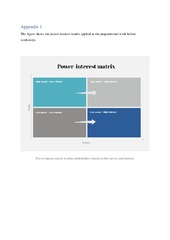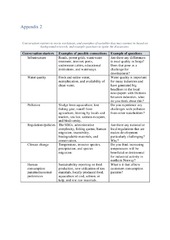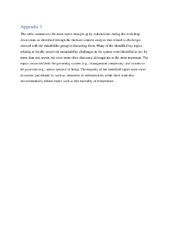| dc.contributor.advisor | Sønvisen, Signe Annie | |
| dc.contributor.advisor | Johnsen, Jahn Petter | |
| dc.contributor.author | Ahlquist, Ina Helene | |
| dc.date.accessioned | 2024-03-07T15:24:38Z | |
| dc.date.available | 2024-03-07T15:24:38Z | |
| dc.date.issued | 2023-08-14 | |
| dc.description.abstract | Achieving social, environmental, and economic sustainability has become the aim of nations and organizations across the globe. One of the attempts to operationalize sustainability is through the integration of the sustainable development goals in coastal governance. However, the perceived characteristics of challenges for sustainability, and thus also solutions to them, may differ depending on the point of view, and there may be a gap between perceptions of sustainability at different levels. Since perceptions of sustainability are shaped by how people interact with and understand the system they are part of, local key stakeholders were engaged at a specific local level, Senja Municipality, to explore local perceptions of sustainability. The stakeholders provided information about the context, including what they regarded as the conditions and limitations under which local sustainable development takes place.
Working towards sustainability is challenging in cases where governance efforts are not perceived as contributing to sustainability at the local level. In the case of Senja, local stakeholders arguably perceived their system as an SES where a more sustainable development could be found as compromises within environmental, social, and economic aspects, depending on the context. It concerned trade-offs where steps must be taken to reduce or hinder irreversible measures that later will be regretted. This has implications for local governance through how identifying sustainable compromises, therefore, becomes a governance challenge and a question about which processes and governance mechanisms are needed to do so. A result of shortcomings in managing the gap between top-down sustainability objectives and perceived local challenges for sustainability is that overall sustainability may be limited. | en_US |
| dc.identifier.uri | https://hdl.handle.net/10037/33135 | |
| dc.language.iso | eng | en_US |
| dc.publisher | UiT The Arctic University of Norway | en_US |
| dc.publisher | UiT Norges arktiske universitet | en_US |
| dc.rights.accessRights | openAccess | en_US |
| dc.rights.holder | Copyright 2023 The Author(s) | |
| dc.rights.uri | https://creativecommons.org/licenses/by-nc-sa/4.0 | en_US |
| dc.rights | Attribution-NonCommercial-ShareAlike 4.0 International (CC BY-NC-SA 4.0) | en_US |
| dc.subject.courseID | FSK-3960 | |
| dc.subject | VDP::Landbruks- og Fiskerifag: 900::Fiskerifag: 920 | en_US |
| dc.subject | VDP::Agriculture and fishery disciplines: 900::Fisheries science: 920 | en_US |
| dc.title | Exploring the gap between top-down sustainability objectives and perceived local sustainability challenges – the case of Senja Municipality | en_US |
| dc.type | Master thesis | en_US |
| dc.type | Mastergradsoppgave | en_US |


 English
English norsk
norsk



